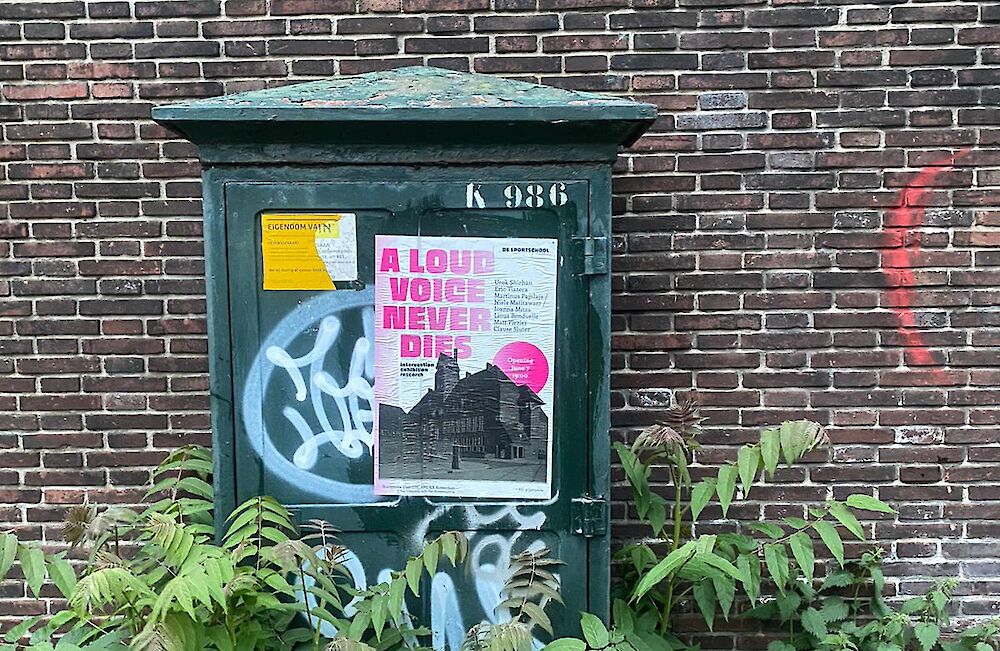As somebody that was born and grew up in the South of Rotterdam, I have grown up speaking a particular version of the Dutch language. It is widely known as straattaal, although this term doesn’t come without problems. By implicitly calling upon a hierarchy of what kind of ‘taal’ (language) is proper and which is ‘straat’ (street), this very particular description is undoubtedly a violent categorization.
This hierarchy does, amongst many things, lead to forms of codification. Straattaal can be regarded as a minor-literature that goes by different names when translated in English: slang, jargon, dialect, etc. It is a known, and a semi-acknowledged, but fundamentally less respected, part of the Dutch language. The intricate linguistic makeup that derives from many other cultural backgrounds makes it a complex concoction of ethnocultural influences that is embodied—you might call it a verbal mobilization of intersectionality.
It feels odd to me, for this to be dangling here codified in English. However, it is here because I am here. I switch in and out of institutions that have English as their linguistic mode of accessibility, to a space that has Straattaal as a language of access. I speak neither and I speak both. I write within these walls, then exit a large glass-windowed sliding door, and bump into an acquaintance, saying “faka?!”
In terms of ‘natural languages’, the ramifications are widely audible: the utterance of terms, carried from countries that people have migrated from, are sonically present through the streets of Rotterdam. Wollah. Similarly, this complex concoction has numerical ramifications too.
There are not many, but, just a few vernacular terms that explicitly pertain to the realm of numeracy. From an informal economical perspective, it becomes particularly interesting to realize that the majority of these terms are used to refer to an amount of money. E.g., negen barkie. It is for this reason, amongst grammatical reasons as well, that the terms do not pertain to specific decimal descriptions, instead they are mainly used to refer to rounded off numbers. How are they used, and what does this vernacular numerical literacy do within the intersectional landscapes of Rotterdam? That’s the question I’m primarily thinking about. Traveling from this space of a lingua franca dominated context to the space outside of the institution's door, a different social proximity is attained by conversing with these numerical sentences. When that happens, the vernacular numerical building blocks are constantly repositioned on the outer layer of my presence. Code switching (the image of) the subject.
To remind: this is not an explanation of how it works. This is an extended definition of the grammatical code-switching conditions of Dutch vernacular numbers. A contextualization of the manner in which numbers are spoken within an English-speaking context that is itself within, but also outside of, this landscape where these terms are uttered.
This writing is deliberately not detailed. It is not the desire to "teach" this system, on the contrary, it is the wish to highlight some of the complexities that I go through. After all, the angular degree of an italicized ‘I’ is close to that of ‘/’, the symbol of division. These words are here, because this place, in the arts, is divided from, but complicit with, Straattaal speakers—I’m one of them.
Vernacular Numeracy sets out to simply present this twofold condition of proximity and remoteness by deconstructing the codes. These contextualizations are presented and imaged through a set of markers that could be rearranged to write numbers. That’s my definition of it. Through these marker-images, not only ‘natural language’, but numbers as well, are considered and mobilized as important objects within the practice of code-switching. A convergence of numerical and natural language.
There are only a few vernacular numerical terms within the (Rotterdam) Straattaal vocabulary. Ranging from donnie to doezoe, these terms are primarily remembered from Sranan Tongo, or 'Suriname tongue', an English-based creole language that forms the basis for many Straattaal terms. For the numerical terms to be used together in order to form more intricate numbers, a set of basic arithmetic operations have to be introduced. Namely: addition, subtraction, multiplication, and division. It is through these operations (in theory at least) that all numbers can be represented through this approach.
As mentioned before, it is important to stress that these six verbally-notated numbers are not (usually, at least) operative on their own. They need help. For example, to start at the beginning, namely, at the temporal commencement of this project: 2 doezoe 2 donnie. The multiplication of both doezoe (1000) and donnie (10), in order to form the number ‘2020’ becomes an example of this process. The grammar that allows for these formations already exists widely within the contexts where these numbers are uttered. Here it also becomes clear that ‘addition’ is the most commonly used arithmetic operation to string together the aforementioned numbers. It is through the successive placement of these terms in a sentence that a grammar of addition is mobilized.
Having said all of this, Vernacular Numeracy makes nothing more than a simple and humble attempt at highlighting embodied ‘numerical’ complexities. Certain code-switching bodies slip in and out of natural-, and numerical-language models. Theorizations aside, Straattaal numbers are nestled within the nooks and crannies of our collectively parenthesized patterns.
